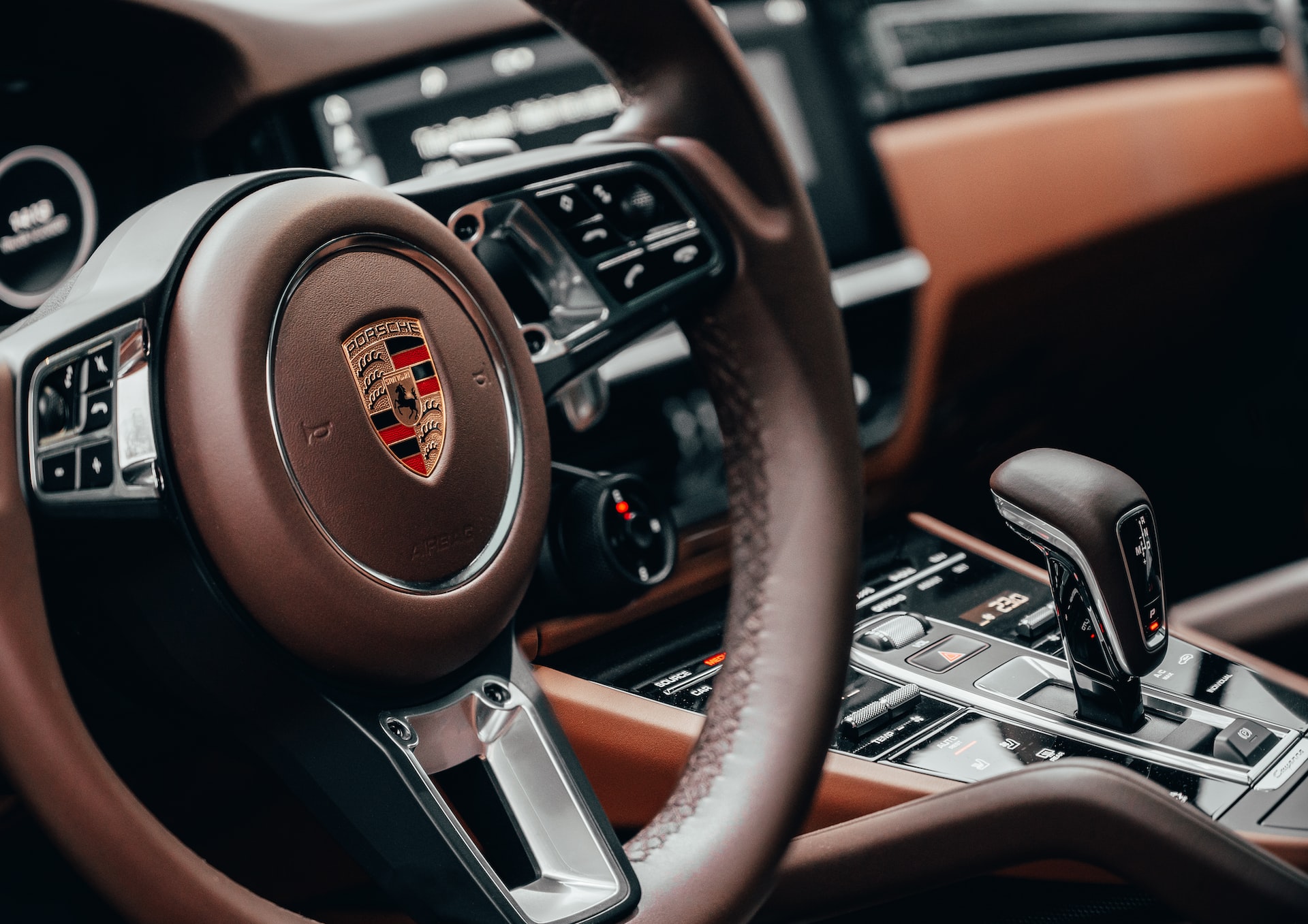Transmission type is an essential aspect of a car’s performance and driving experience. The debate between manual and automatic transmission has been ongoing for decades, and both options have their share of loyal supporters. Some drivers swear by the control and engagement of a manual transmission, while others prefer the ease and convenience of an automatic.
In this article, we’ll explore the differences between manual and automatic transmissions in terms of performance, efficiency, maintenance, and other factors. We’ll examine the pros and cons of each option, as well as their impact on the environment and resale value. By the end of this article, you’ll have a better understanding of which transmission type is right for you.
The Basics: What is a Manual and Automatic Transmission?
Before diving into the differences between manual and automatic transmissions, it’s essential to understand what each type of transmission is and how it works.
A manual transmission, also known as a stick shift, is a type of transmission that requires the driver to manually shift gears using a clutch pedal and a gearshift lever. The clutch pedal is located on the left side of the brake pedal, and it’s used to engage and disengage the engine from the transmission. The gearshift lever is usually located in the center console between the driver and passenger seats or on the steering wheel column. The driver needs to move the gearshift lever to change gears manually.
On the other hand, an automatic transmission is a type of transmission that automatically changes gears without any input from the driver. The automatic transmission system has a hydraulic torque converter that senses the engine’s speed and the car’s velocity and adjusts the gear ratio accordingly. The driver only needs to put the car in “drive” or “reverse” and let the transmission do the work.
In summary, a manual transmission requires the driver to shift gears manually, while an automatic transmission does the work automatically. The choice between the two depends on personal preference and driving needs. In the next sections, we’ll explore the pros and cons of each transmission type.
Pros and Cons of Manual Transmission
Manual transmissions have been around for over a century, and they have many benefits, as well as some drawbacks. Here are the pros and cons of using a manual transmission:
Pros:
- Greater control: With a manual transmission, the driver has greater control over the car’s acceleration, deceleration, and overall speed. This control is especially useful in challenging driving conditions like snowy or wet roads.
- Better fuel efficiency: Generally, manual transmissions are more fuel-efficient than automatic transmissions. This is because the driver can shift gears to keep the engine running at its optimal speed and conserve fuel.
- Lower maintenance costs: Manual transmissions have fewer components than automatic transmissions, making them easier and cheaper to maintain over time. Manual transmissions also tend to be more durable and last longer than automatic transmissions.
Cons:
- More difficult to learn: Driving with a manual transmission requires more skill and practice than driving with an automatic transmission. Learning how to shift gears smoothly and at the right time can take time and patience.
- More physical effort: Driving with a manual transmission requires the driver to use their left foot to operate the clutch pedal, which can be tiring in heavy traffic or during long drives.
- Inconvenient in stop-and-go traffic: In stop-and-go traffic, the constant shifting between gears can be frustrating and tiresome, leading to a less enjoyable driving experience.
In summary, manual transmissions offer greater control, better fuel efficiency, and lower maintenance costs, but they require more skill and effort to operate and can be inconvenient in heavy traffic.
Pros and Cons of Automatic Transmission
Automatic transmissions have become increasingly popular over the years, and for good reason. They offer many benefits, as well as some drawbacks. Here are the pros and cons of using an automatic transmission:
Pros:
- Easy to use: With an automatic transmission, the driver doesn’t have to worry about shifting gears manually. The transmission system does all the work automatically, making it easier and more convenient to drive.
- More comfortable in traffic: In heavy traffic or stop-and-go driving, an automatic transmission is more comfortable and less tiring for the driver since there’s no need to keep shifting gears.
- Safer in emergencies: In emergency situations where quick acceleration or deceleration is needed, an automatic transmission can shift gears faster and more efficiently than a manual transmission, helping the driver avoid potential accidents.
Cons:
- Lower fuel efficiency: Generally, automatic transmissions are less fuel-efficient than manual transmissions. This is because the transmission system needs to work harder to shift gears automatically, which can waste fuel.
- Higher maintenance costs: Automatic transmissions have more components than manual transmissions, making them more complex and expensive to maintain. Repairs can be costly, especially if the transmission system needs to be replaced.
- Less control: With an automatic transmission, the driver has less control over the car’s acceleration and overall speed. This can be a disadvantage in certain driving situations where precise control is needed.
In summary, automatic transmissions offer ease of use, comfort in heavy traffic, and increased safety in emergencies, but they have lower fuel efficiency, higher maintenance costs, and less driver control.
Fuel Efficiency: Which Transmission Saves More Gas?
When it comes to fuel efficiency, the type of transmission a car has can have a significant impact on gas mileage. Let’s compare the fuel efficiency of manual and automatic transmissions and see which one saves more gas.
Manual Transmission Fuel Efficiency
Generally, cars with manual transmissions are more fuel-efficient than cars with automatic transmissions. This is because manual transmissions have fewer parts, which means less power is needed to operate them. In addition, drivers with manual transmissions can control the car’s speed and gear ratio more precisely, allowing them to conserve fuel.
For example, a manual transmission car with a 1.6-liter engine and a 6-speed manual transmission can achieve an average fuel efficiency of 33 miles per gallon (MPG) in the city and 41 MPG on the highway.
Automatic Transmission Fuel Efficiency
While automatic transmissions are generally less fuel-efficient than manual transmissions, newer automatic transmissions have become more efficient over time. Some modern automatic transmissions use advanced technology like torque converters, variable valve timing, and multiple gears to improve fuel efficiency.
For example, a car with a 1.5-liter engine and a continuously variable transmission (CVT) can achieve an average fuel efficiency of 30 MPG in the city and 38 MPG on the highway.
Which One Saves More Gas?
Overall, manual transmissions are still more fuel-efficient than automatic transmissions, but the difference in fuel efficiency between the two types of transmissions is becoming smaller over time. When it comes to saving gas, the driver’s behavior also plays a role. A driver who frequently accelerates and brakes aggressively will consume more gas, regardless of the type of transmission.
Performance: Which Transmission Offers Better Speed and Acceleration?
When it comes to speed and acceleration, the type of transmission a car has can also have a significant impact on performance. Let’s compare the performance of manual and automatic transmissions and see which one offers better speed and acceleration.
Manual Transmission Performance
Manual transmissions offer greater control over the car’s acceleration and speed, which can be advantageous in certain situations. Drivers can shift gears more quickly and accurately, allowing them to accelerate faster and reach higher speeds.
For example, a car with a 2.0-liter engine and a 6-speed manual transmission can accelerate from 0 to 60 miles per hour in around 6 seconds.
Automatic Transmission Performance
While automatic transmissions are generally less responsive than manual transmissions, modern automatic transmissions have become more advanced in recent years, and some can offer impressive performance. Automatic transmissions can shift gears faster than humanly possible, resulting in faster acceleration and higher speeds.
For example, a car with a 2.0-liter engine and an 8-speed automatic transmission can accelerate from 0 to 60 miles per hour in around 5.5 seconds.
Which One Offers Better Speed and Acceleration?
Overall, both manual and automatic transmissions can offer impressive speed and acceleration, but automatic transmissions have become more advanced in recent years, making them more competitive with manual transmissions in terms of performance. The choice between the two types of transmissions ultimately depends on personal preference and driving needs.
Maintenance: Which Transmission is Easier and Cheaper to Maintain?
Maintaining a car’s transmission is essential for ensuring its longevity and performance. The type of transmission a car has can impact the maintenance requirements and costs. Let’s compare the maintenance requirements and costs of manual and automatic transmissions and see which one is easier and cheaper to maintain.
Manual Transmission Maintenance
Manual transmissions are generally simpler and have fewer parts than automatic transmissions, which makes them easier and cheaper to maintain. The clutch system in a manual transmission is the most significant maintenance item and needs to be replaced after a certain number of miles or when it shows signs of wear and tear. Other maintenance items for a manual transmission include changing the transmission fluid and checking the gears for wear.
Automatic Transmission Maintenance
Automatic transmissions have more complex components than manual transmissions, which can make them more expensive to maintain. The fluid in an automatic transmission needs to be replaced regularly to prevent wear and tear and ensure the transmission system’s proper functioning. Automatic transmissions can also be more prone to problems like overheating or leaks, which can be costly to repair.
Which One is Easier and Cheaper to Maintain?
Overall, manual transmissions are generally easier and cheaper to maintain than automatic transmissions. Manual transmissions have fewer components and require less frequent maintenance, making them less expensive in the long run. However, both types of transmissions require regular maintenance to ensure their proper functioning and longevity.
Resale Value: Which Transmission Retains More Value in the Long Run?
When it comes to buying a car, resale value is an essential factor to consider. The type of transmission a car has can affect its resale value. Let’s compare the resale value of manual and automatic transmissions and see which one retains more value in the long run.
Manual Transmission Resale Value
Generally, cars with manual transmissions have a higher resale value than cars with automatic transmissions. This is because manual transmissions are typically more sought after by car enthusiasts and performance drivers. Manual transmissions can also be harder to find, which can make them more valuable in the used car market.
Automatic Transmission Resale Value
Automatic transmissions are more popular than manual transmissions, especially in the United States. This means that automatic transmission cars are more widely available, which can make them less valuable in the used car market. However, some modern automatic transmissions are highly advanced and can offer impressive performance, which can increase their resale value.
Which One Retains More Value in the Long Run?
Overall, cars with manual transmissions tend to retain more value in the long run than cars with automatic transmissions. However, the difference in resale value can vary depending on the make and model of the car and the current demand in the used car market.
Environmental Impact: Which Transmission is More Environmentally Friendly?
The environmental impact of a car is an important consideration, especially in today’s world where sustainability is a growing concern. The type of transmission a car has can impact its environmental impact. Let’s compare the environmental impact of manual and automatic transmissions and see which one is more environmentally friendly.
Manual Transmission Environmental Impact
Manual transmissions generally have a lower environmental impact than automatic transmissions. This is because manual transmissions tend to be more fuel-efficient, which means they produce fewer greenhouse gas emissions. Manual transmissions also tend to have fewer complex components, which means they require less energy to manufacture and dispose of.
Automatic Transmission Environmental Impact
Automatic transmissions are typically less fuel-efficient than manual transmissions, which means they produce more greenhouse gas emissions. Automatic transmissions also have more complex components, which require more energy to manufacture and dispose of. However, newer automatic transmissions are becoming more advanced and can offer better fuel efficiency, which can reduce their environmental impact.
Which One is More Environmentally Friendly?
Overall, manual transmissions tend to be more environmentally friendly than automatic transmissions. However, the difference in environmental impact can vary depending on the make and model of the car and the driving conditions. In general, cars with smaller engines and lighter bodies tend to be more environmentally friendly, regardless of the type of transmission.
Future of Transmission: Will Automatics Replace Manuals?
The automotive industry is constantly evolving, and the future of transmissions is an interesting topic of discussion. Let’s explore whether automatic transmissions will eventually replace manual transmissions.
Automatic Transmission Advancements
Automatic transmissions have come a long way in recent years, and newer automatic transmissions are becoming more advanced and sophisticated. Some of the latest automatic transmissions are equipped with features like paddle shifters, torque converters, and multiple gears, allowing drivers to control the transmission’s behavior more precisely.
Manual Transmission Popularity
While automatic transmissions are becoming more popular, manual transmissions still have a dedicated following of car enthusiasts and performance drivers. Manual transmissions offer greater control over the car’s acceleration and speed, and many drivers enjoy the tactile sensation of shifting gears manually.
The Future of Transmissions
It’s difficult to predict the future of transmissions, but it’s unlikely that automatic transmissions will completely replace manual transmissions anytime soon. While automatic transmissions are becoming more advanced and efficient, many drivers still prefer the feel and control of a manual transmission. However, it’s possible that manual transmissions may become less common in the future as newer technologies like electric powertrains and hybrid systems become more prevalent.
Conclusion
In conclusion, the future of transmissions is uncertain, but it’s unlikely that automatic transmissions will completely replace manual transmissions in the near future. Both manual and automatic transmissions have their advantages and disadvantages, and the choice between the two ultimately depends on personal preference and driving needs.









